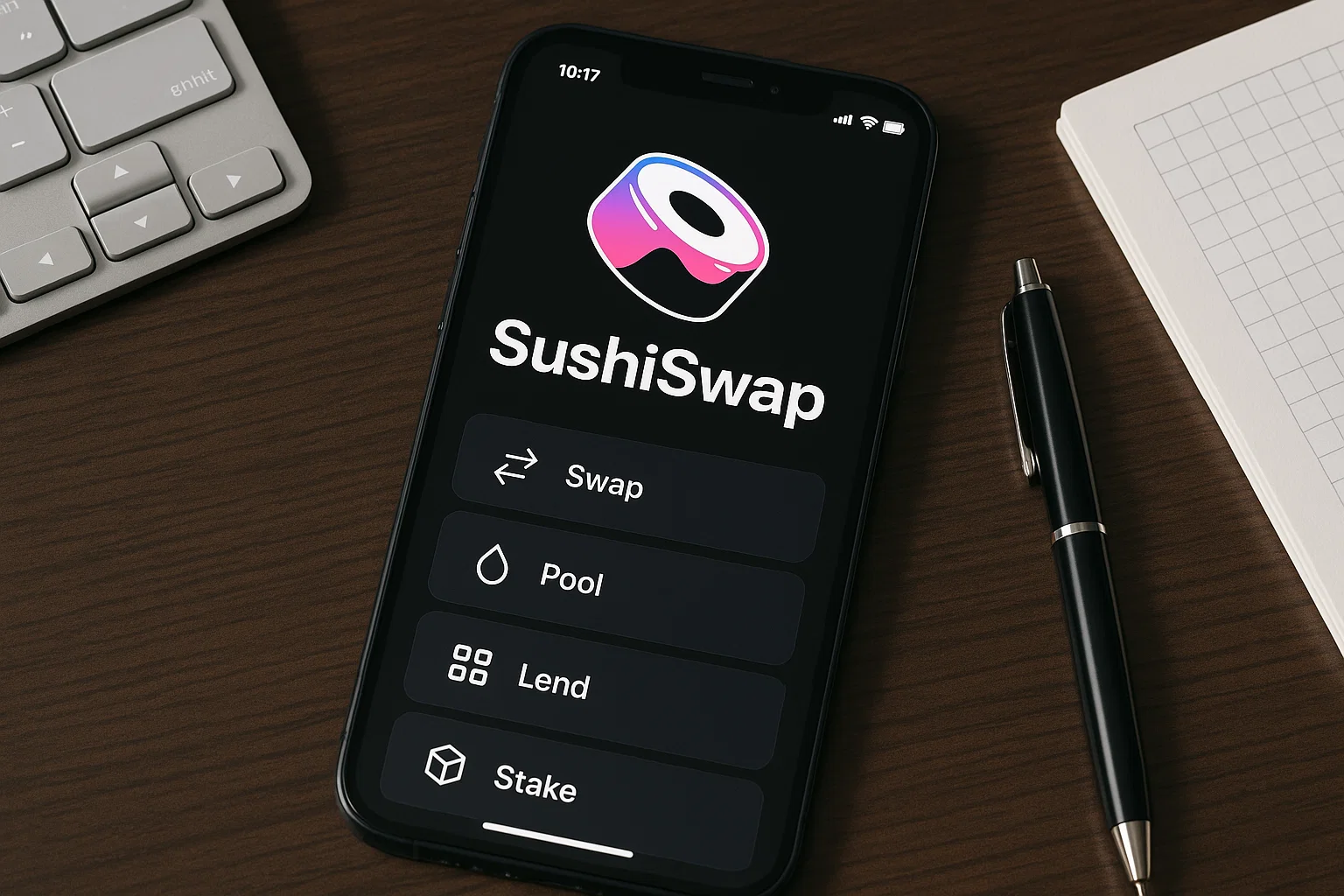Ever found yourself scratching your head, wondering how “Sushi” got involved in crypto? Same. But in the world of DeFi (Decentralized Finance), quirky names are the norm—and SushiSwap happens to be one of the most flavor-packed players on the menu.
Picture this: You’re a startup founder sipping your third coffee, trying to wrap your brain around how to build a next-gen finance app. Suddenly, your feed explodes with terms like DEX, yield farming, and yep—SushiSwap. It’s not just buzz. It’s a decentralized exchange app that’s making serious waves.
SushiSwap isn’t just about trading tokens without a middleman—it’s about rewriting how digital finance works. And if you’re dreaming of building something similar, you’re in for a ride. Here at Miracuves, we’ve helped turn dozens of such disruptive ideas into fast, scalable apps. Let’s unravel how SushiSwap works, and what you can learn from it.
What is SushiSwap, Anyway?
SushiSwap is a decentralized exchange (DEX) built on the Ethereum blockchain. It lets users swap tokens directly from their wallets—no registration, no central authority, no middlemen.
But it didn’t start as just another DEX. SushiSwap was born as a fork of Uniswap, another leading DEX. While Uniswap stuck to the basics, SushiSwap spiced things up by adding community-driven governance, yield farming, and a native token called SUSHI.
Think of it as the “open-source remix” of Uniswap, cooked up by anonymous developers and served with a side of incentive-driven tokenomics.
Related Tech Stack:
- Blockchain: Ethereum (also supports BNB Chain, Polygon, Avalanche, etc.)
- Smart Contracts: Solidity-based
- Token Standard: ERC-20
- Wallets: MetaMask, WalletConnect

How SushiSwap Works: Under the Hood
SushiSwap ditches traditional order books and instead uses an Automated Market Maker (AMM) model.
Liquidity Pools
Users deposit tokens into pools (like ETH/USDT). These pools power swaps and generate fees. In return, users get Liquidity Provider (LP) tokens, which represent their share of the pool.
Yield Farming & Staking
SushiSwap rewards LPs with SUSHI tokens. Users can stake these to earn more rewards or participate in governance.
Wallet-to-Wallet Swaps
No need for an account or KYC. Just connect your wallet and swap tokens. It’s finance, reimagined.

Why Entrepreneurs Love the SushiSwap Model
Let’s break it down. SushiSwap isn’t just an app; it’s a blueprint for DeFi innovation. Here’s why founders and builders are obsessed:
1. No Middlemen = More Freedom
You’re not relying on banks or traditional institutions. The smart contract is the law.
2. Monetization Without Ads
Fees from swaps go directly to liquidity providers and the protocol—real revenue, no gimmicks.
3. Gamified Community Engagement
Staking, rewards, and governance create sticky user behavior. People don’t just use SushiSwap—they own it.
What You Can Learn If You’re Building a DeFi Clone
Okay, so you want to ride the DeFi wave. Here’s the inside scoop if you’re building a SushiSwap-style app:
Must-Have Features
- Token Swap Engine
- Liquidity Pool Dashboard
- Reward Distribution Logic
- Wallet Integration (e.g., MetaMask)
- On-chain Governance System
Tech Considerations
- Use Solidity for smart contracts
- Front-end with React or Vue.js
- APIs for price oracles (e.g., Chainlink)
- Audit-ready security practices
SushiSwap Clone Use Cases (And Why They’re Booming)
Here’s where it gets exciting—SushiSwap’s model can be adapted for more than just Ethereum token swaps.
Also Read :-Proven Revenue Models for Your Decentralized Crypto Exchange
DeFi Niches Ripe for Cloning:
- NFT Marketplaces with AMM Mechanics
- Decentralized Sports Betting
- Tokenized Real Estate Swaps
- Cross-Chain Token Bridges
Startups are adapting the SushiSwap blueprint for use cases across gaming, logistics, and even social tokens.
The Rise of Multi-Chain Sushi: Expansion Stories
SushiSwap didn’t stay loyal to Ethereum forever. It expanded to Binance Smart Chain, Polygon, Avalanche, and Arbitrum, adapting to lower fees and faster transactions.
This tells you something: Multi-chain is the future. When building your clone, don’t lock yourself into one chain.
Future of DEX Apps: What Lies Ahead?
With the rise of account abstraction, layer-2 scaling, and AI-integrated trading bots, the SushiSwap model is evolving fast.
Explore the best SushiSwap clone scripts of 2025 — compare features, pricing, and scalability to launch your DeFi exchange instantly.
Expect features like:
- Gasless transactions
- Social token swaps
- Voice-command trading UIs
Smart founders are already prototyping SushiSwap-style clones that blend DeFi with Web3, NFTs, and even AI. You could be next.
Startups choose our SushiSwap clone for its ready-made DeFi features, cutting months off development time and reducing launch costs.
Conclusion
SushiSwap isn’t just an app—it’s a movement. One that democratizes finance and rewards creators, communities, and liquidity providers alike.
Thinking of launching your own DeFi-powered exchange? Now’s the time to stir the pot.
At Miracuves, we help innovators launch high-performance app clones that are fast, scalable, and monetization-ready. Ready to turn your idea into reality? Let’s build together.
FAQs
What is the main difference between SushiSwap and Uniswap?
SushiSwap was forked from Uniswap but added community governance, staking, and SUSHI token rewards.
Is SushiSwap safe to use?
It’s decentralized and audited, but like all DeFi platforms, it carries smart contract and market risks.
Can I make money with SushiSwap?
Yes. You can earn rewards by providing liquidity and staking SUSHI tokens, but returns depend on market conditions.
Does SushiSwap charge fees?
Yes, usually 0.3% per trade—distributed among liquidity providers and the protocol.
Can I build my own SushiSwap clone?
Absolutely. With the right dev team (hint: Miracuves), you can create a customized DEX app tailored to your vision.
What blockchains does SushiSwap support?
Originally on Ethereum, it now supports BNB Chain, Polygon, Avalanche, Arbitrum, and more.








